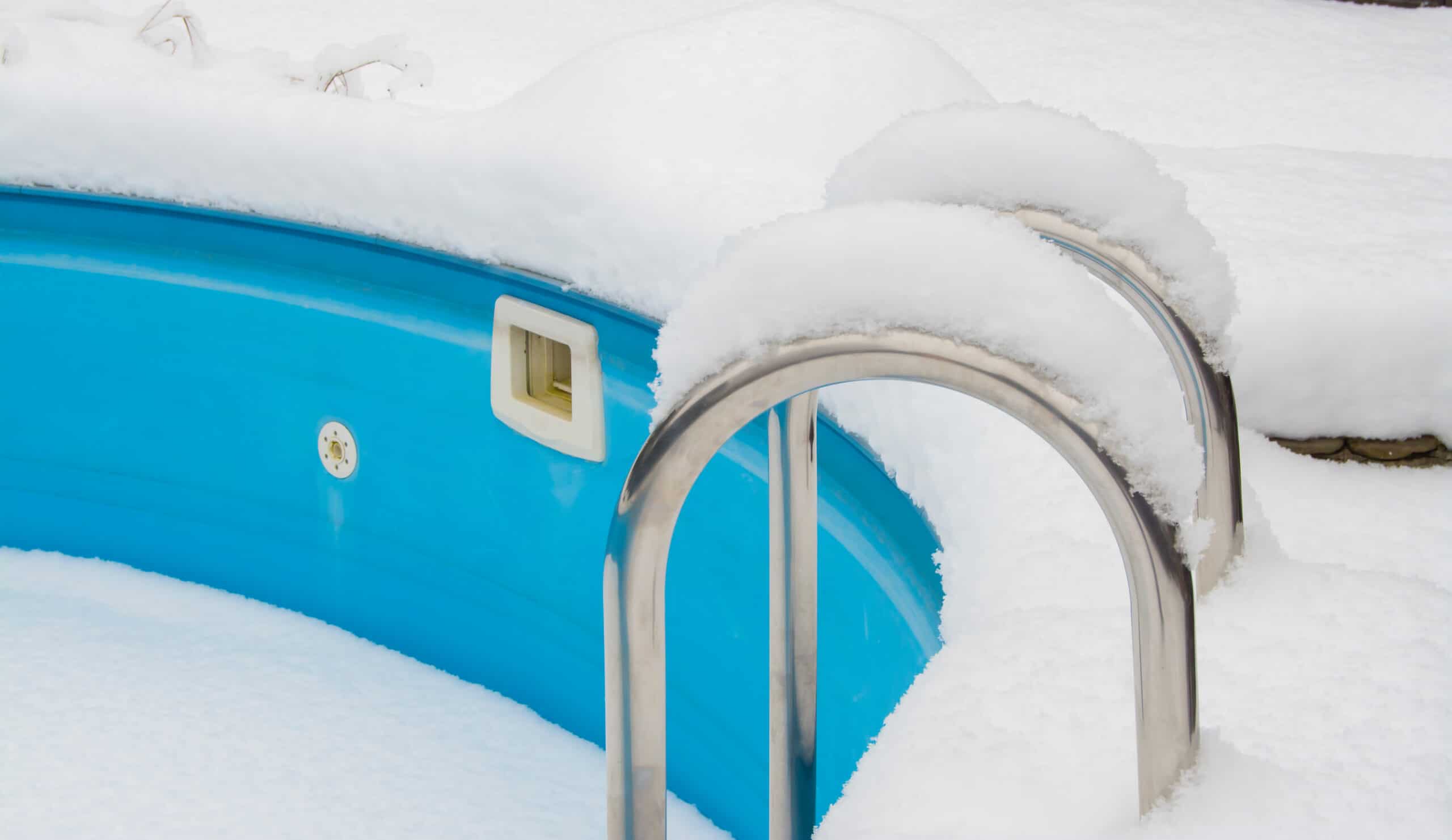If you buy a house with an existing salt water pool like my wife and I did, the ideal time to buy is in the summer when the pool is running. Not only can you see the pool and study each important aspect, you can listen too. Listen to the pump, listen to sounds that the pool makes and figure out if you can hear or see anything that might need replacement.
Plus you can also use the pool before the end of season!
But what about buying a house with a salt water pool in the winter when the pool is closed and possibly covered in snow?
Home inspectors often won’t inspect a pool anyways but you can ask the current home owner for receipts for the chlorinator, pump and other parts to see how old they are. You can also inspect the salt cell to see how clean and how well-maintained it is along with other pool parts and perhaps speak with their pool company if possible.
How to buy a home with a salt water pool in the winter
Try your best to view as many of the pool parts as possible. The parts that you can at least look at and visually inspect include:
- Salt chlorinator control panel
- Salt cell
- Pump
- Heater if any
- Automatic vacuum system if any
- Pool accessories if any such as as ladder, pool cover, skimmer, etc.
In each case you’re looking to see the shape that each item is in. Not only to see how old/new it is, but to see how the owner has taken care of it. It may give clues as how to well the pool – and house for that matter – are kept.
Obviously, you’ll have a better time viewing the pool if there is no snow on the ground but if there is, you’ll have to do your best.
You might also request a warranty from the seller against anything that is broken. You may also ask to speak with the pool company – if the previous home owners use one – to ask about the state of the pool.
You may also ask about putting some money from the purchase price into escrow until the pool can be started up successfully.
In our case, the pool company that the previous owner of our home was using also built the pool so they were very familiar with it.
Why you might want to buy a salt water pool in the winter
In the middle of winter, the last thing people think of is a pool. In that regard, a home that is for sale that does have an existing salt water pool may end up becoming a good deal for you since a pool in winter is hardly a selling feature.
Most homes don’t have pools and most people don’t want them. If you find a house with a salt water pool and it’s the middle of winter, the sellers might be willing to offload the house at a good price to you if they need to sell and have no other takers.
Just balance that out with the fact that you may not necessarily know what shape the pool is in until the spring when you’re liable for it.
Does the pool have a winter pool cover installed? If so, you might ask it’s possible to lift part of it up to get a look at the liner etc.
If there is no pool cover, you might at least be able to view the liner yourself and look for clues as to what shape the pool is in.
What to look for when buying a home with an existing salt water pool
If possible, hire a qualified home inspector who has experience and knowledge of pools to check the shape of the pool itself and the related equipment. The average home inspector isn’t qualified and don’t offer this service.
If this is not possible, you’ll have to do your best to look at the important aspects of the pool that we covered above.
In this case, you might enquire about the possibility of a warranty of sorts from the seller of the home to you, warrantying that the pool is in working order.
That way you’ll increase the chances you end up with a pool that is (almost) ready to swim in.
On the other hand, you might end up with a story like this couple when they purchased a distressed property with a pool and needed more time and money to fix it to get it right.
This story is more on the extreme end but if a pool has been left dormant to an empty house for some time, you might end up having to replace some costly items to get the pool running again.
Bottom line: Buying a home with a salt water pool in the middle of winter takes a bit more care and in some cases, a risk, since you may not be able to inspect all aspects of the pool in detail.

